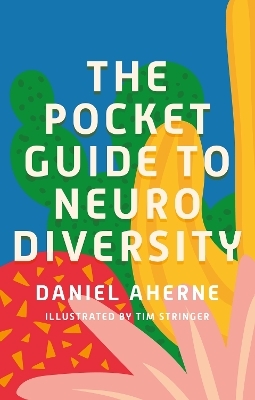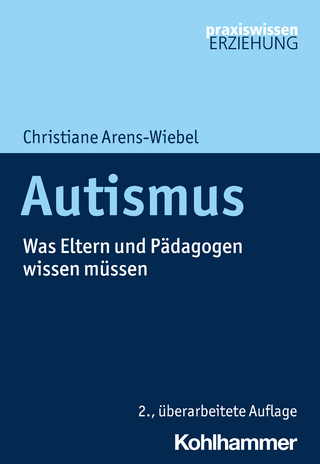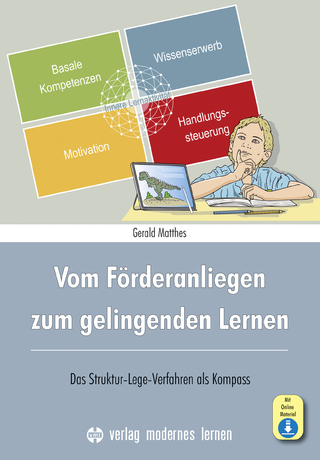
The Pocket Guide to Neurodiversity
Seiten
2023
|
Illustrated edition
Jessica Kingsley Publishers (Verlag)
978-1-83997-014-6 (ISBN)
Jessica Kingsley Publishers (Verlag)
978-1-83997-014-6 (ISBN)
A simple, accessible guide to neurodiversity, unpacking the four main diagnoses of autism, ADHD, dyslexia and dyspraxia. The book also explains some common co-occurring conditions, strengths and difficulties, and concepts such as spiky profiles, executive functioning and working memory.
At least one in seven people are thought to be neurodivergent. So what exactly is neurodiversity? What does 'executive functioning' mean? What are 'spiky profiles'?
In this simple guide, expert speaker and trainer Daniel Aherne provides a clear introduction to neurodiversity and the four most common neurodivergent identities of autism, ADHD, dyslexia and dyspraxia. Using an analogy of a cactus needing a desert to grow in, he emphasises the importance of getting the environment right for neurodivergent people, rather than expecting them to adapt to the neurotypical world. Daniel, who himself has ADHD, also explains how neurodivergent people often have great strengths alongside areas of difficulty, and writes about the interplay between diagnoses, as well as unpacking tricky concepts such as working memory, sensory processing, communication differences and more.
Busting common misconceptions and setting out simple tips and guidance for supporting the neurodivergent people around you, whether among your family, friends or at your school, college or workplace - or if you yourself are ND and want to improve the understanding of others - this essential guide will help us all celebrate neurodiversity and foster more inclusive communities.
At least one in seven people are thought to be neurodivergent. So what exactly is neurodiversity? What does 'executive functioning' mean? What are 'spiky profiles'?
In this simple guide, expert speaker and trainer Daniel Aherne provides a clear introduction to neurodiversity and the four most common neurodivergent identities of autism, ADHD, dyslexia and dyspraxia. Using an analogy of a cactus needing a desert to grow in, he emphasises the importance of getting the environment right for neurodivergent people, rather than expecting them to adapt to the neurotypical world. Daniel, who himself has ADHD, also explains how neurodivergent people often have great strengths alongside areas of difficulty, and writes about the interplay between diagnoses, as well as unpacking tricky concepts such as working memory, sensory processing, communication differences and more.
Busting common misconceptions and setting out simple tips and guidance for supporting the neurodivergent people around you, whether among your family, friends or at your school, college or workplace - or if you yourself are ND and want to improve the understanding of others - this essential guide will help us all celebrate neurodiversity and foster more inclusive communities.
Daniel Aherne founded Adjust in 2016 to help workplaces start the neurodiversity conversation and advises organizations on how to recruit and effectively manage a neurodiverse workforce. He has over 20 years of experience in the field of neurodiversity.
1. Neurodiversity Explained
2. Neurotypes
3. Processing
4. Working Memory
5. Communication
6. Unwritten Rules
7. Emotions
8. Problem-solving
9. Conclusion
| Erscheinungsdatum | 21.12.2022 |
|---|---|
| Illustrationen | Tim Stringer |
| Zusatzinfo | 8 black and white illustrations |
| Verlagsort | London |
| Sprache | englisch |
| Maße | 136 x 214 mm |
| Gewicht | 146 g |
| Themenwelt | Sachbuch/Ratgeber |
| Sozialwissenschaften ► Pädagogik ► Sonder-, Heil- und Förderpädagogik | |
| ISBN-10 | 1-83997-014-6 / 1839970146 |
| ISBN-13 | 978-1-83997-014-6 / 9781839970146 |
| Zustand | Neuware |
| Haben Sie eine Frage zum Produkt? |
Mehr entdecken
aus dem Bereich
aus dem Bereich
das Struktur-Lege-Verfahren als Kompass
Buch | Softcover (2024)
modernes lernen (Verlag)
23,95 €


